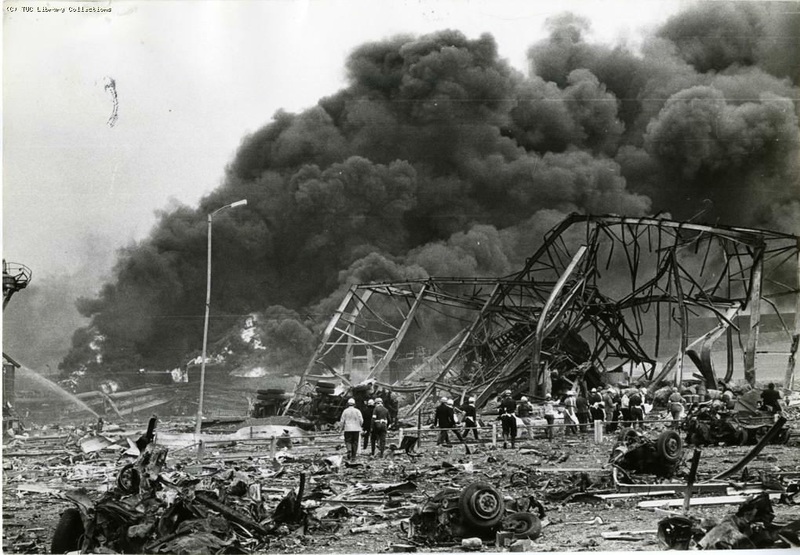Corrosion: Flixborough disaster. Find out the causes of this event!
Event description
Built in 1972, the caprolactam unit (Section 25) held oxidation of cyclohexane using six successive reactors. Each reactor had a capacity of 45 m3 and interior was built on steel plates of 13 mm. The oxidation process is carried out in the presence of a catalyst, by using compressed air.
On March 27, a cyclohexane leak was observed at reactor No.5. Operators have decided to conduct an inspection to mitigate the damage. To restart production, it was decided to conduct a bridge crossing between No.4 and No.6 reactor and reconfiguration of systems without achieving a preliminary study.

(image after the explosion)
On June 1, an explosion occurred in the plant. The disaster led to the loss of 28 lives and seriously injured another 36 people.
What resulted from the investigation?
The explosion was caused by leakage of cyclohexane through the connection points of the reactor No.4 and No.6, extending the reforming tower of H2.
In the initial phase, on the surface of Reactor No. 5 appeared a number of cracks caused by corrosion. Nitrates in water used for small spills of cicloxehan. Water has infiltrated the insulation material and, during evaporation, nitrate deposited on the metal surface.
Reactor No. 5
Due to leakage in the reactor No.5, a complex analysis was needed, before reactivation. It was also necessary to do checks in the other reactors in case of extension of the reactor No.5 problems. Such approach would have meant stopping power for several days, involving high maintenance time in idle equipment and production loss.
All these problems are caused by lack of preventive behavior. This significantly reduces the risk of incidents. We recommend periodic inspections to determine surface conditions and implementation of systems that prevent corrosion. This approach will increase the safety of employees and significantly reduce maintenance costs.
For information regarding corrosion protection systems applications, we provide you the following contacts. Together we will identify the best solution to increase the lifetime of your equipment!













